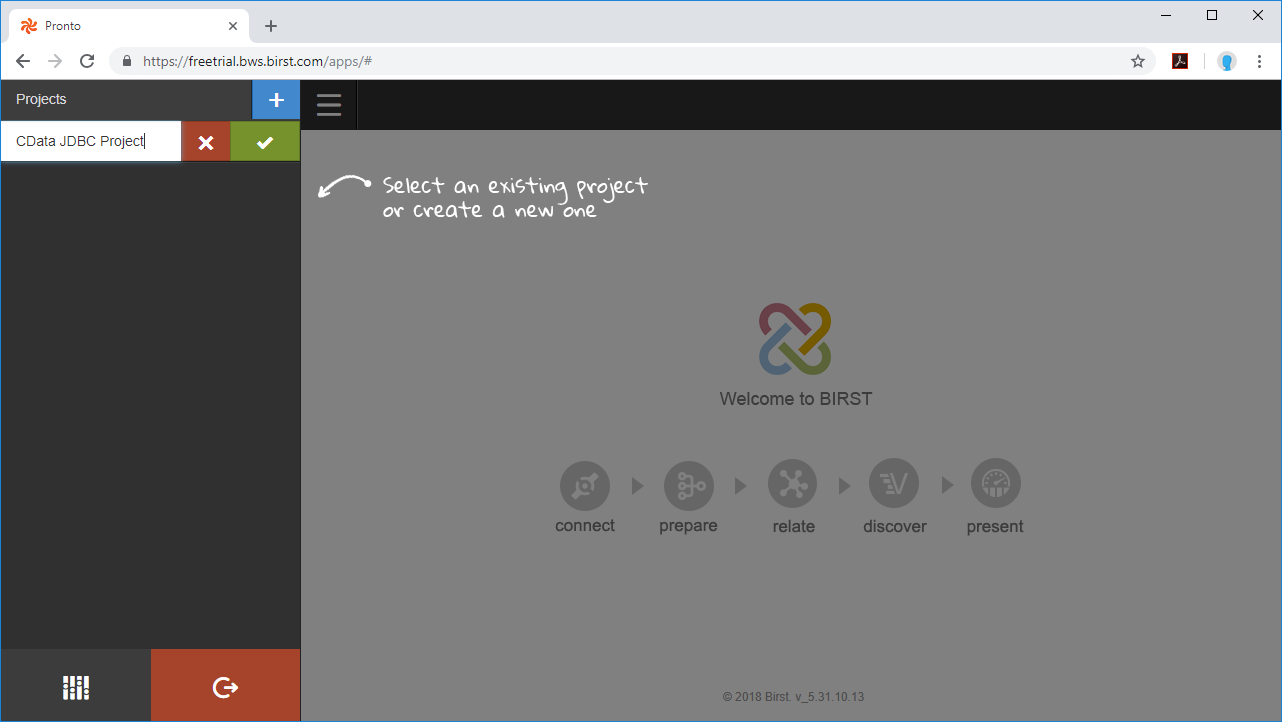Discover how a bimodal integration strategy can address the major data management challenges facing your organization today.
Get the Report →Build Visualizations of Salesforce Marketing Data in Birst
Use CData drivers and the Birst Cloud Agent to build real-time visualizations of Salesforce Marketing data in Birst.
Birst is a cloud business intelligence (BI) tool and analytics platform that helps organizations quickly understand and optimize complex processes. When paired with the CData JDBC Driver for Salesforce Marketing Cloud, you can connect to live Salesforce Marketing data through the Birst Cloud Agent and build real-time visualizations. In this article, we walk you through, step-by-step, how to connect to Salesforce Marketing using the Cloud Agent and create dynamic reports in Birst.
With powerful data processing capabilities, the CData JDBC Driver offers unmatched performance for live Salesforce Marketing data operations in Birst. When you issue complex SQL queries from Birst to Salesforce Marketing, the driver pushes supported SQL operations, like filters and aggregations, directly to Salesforce Marketing and utilizes the embedded SQL Engine to process unsupported operations client-side (often SQL functions and JOIN operations). With built-in dynamic metadata querying, the JDBC driver enables you to visualize and analyze Salesforce Marketing data using native Birst data types.
Configure a JDBC Connection to Salesforce Marketing Data in Birst
Before creating the Birst project, you will need to install the Birst Cloud Agent (in order to work with the installed JDBC Driver). Also, copy the JAR file for the JDBC Driver (and the LIC file, if it exists) to the /drivers/ directory in the installation location for the Cloud Agent.
With the driver and Cloud Agent installed, you are ready to begin.
- Create a new project in Birst.
![Create a new Project in Birst]()
- Name the connection (e.g. CDataSFMarketingCloud).
- Choose Live Access.
- Select an agent.
- Set Database Type to Other.
- Set SQL Type to MSSQL
- Set the Connection string.
Authenticating to the Salesforce Marketing Cloud APIs
Set the User and Password to your login credentials, or to the credentials for a sandbox user if you are connecting to a sandbox account.
Connecting to the Salesforce Marketing Cloud APIs
By default, the data provider connects to production environments. Set UseSandbox to true to use a Salesforce Marketing Cloud sandbox account.
The default Instance is s7 of the Web Services API; however, if you use a different instance, you can set Instance.
Built-in Connection String Designer
For assistance in constructing the JDBC URL, use the connection string designer built into the Salesforce Marketing JDBC Driver. Either double-click the JAR file or execute the jar file from the command-line.
java -jar cdata.jdbc.sfmarketingcloud.jarFill in the connection properties and copy the connection string to the clipboard.
![Using the built-in connection string designer to generate a JDBC URL (Salesforce is shown.)]()
When you configure the JDBC URL, you may also want to set the Max Rows connection property. This will limit the number of rows returned, which is especially helpful for improving performance when designing reports and visualizations.
Below is a typical JDBC connection string for Salesforce Marketing:
jdbc:sfmarketingcloud:User=myUser;Password=myPassword;InitiateOAuth=GETANDREFRESH - Set the Driver Name: cdata.jdbc.sfmarketingcloud.SFMarketingCloudDriver and click Save.
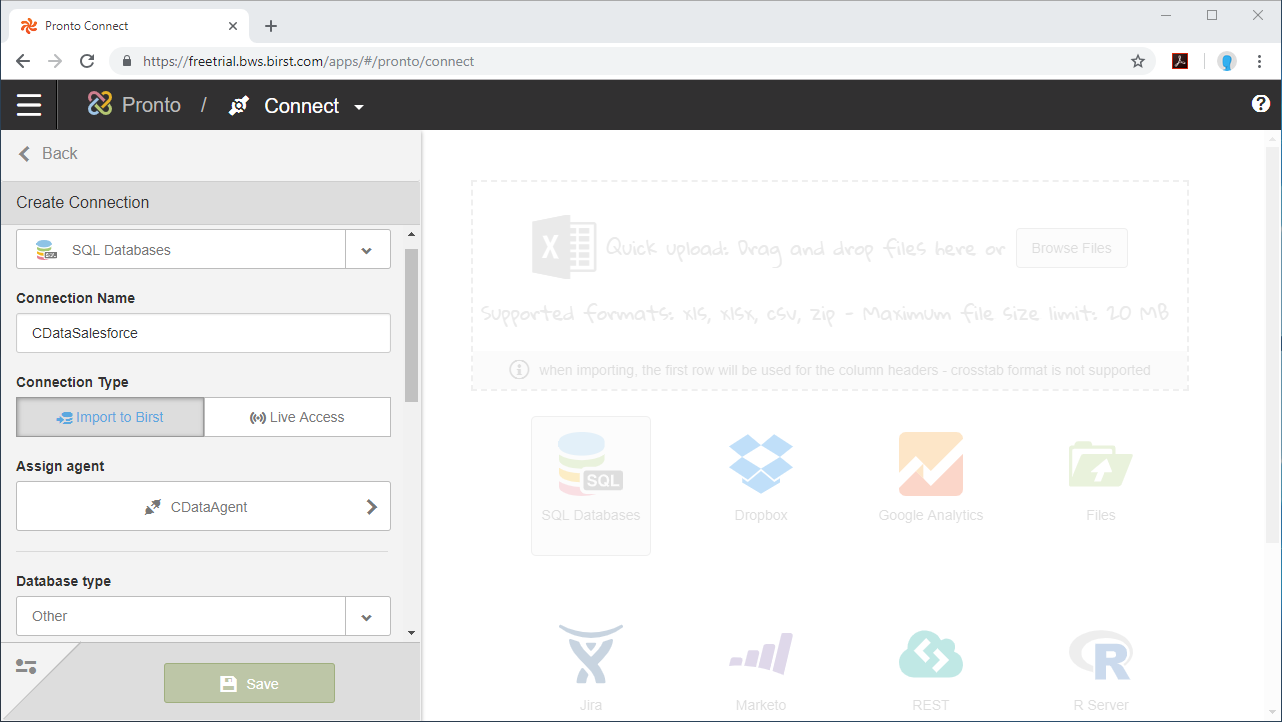
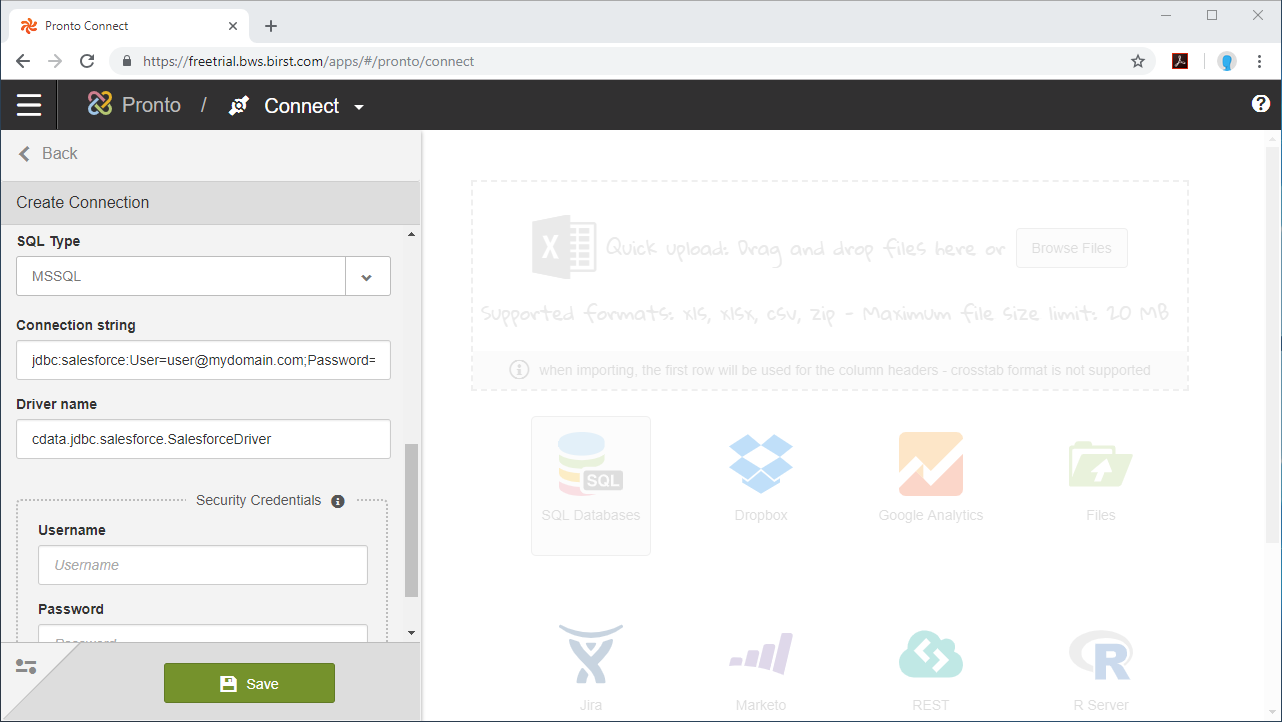
NOTE: Since authentication to Salesforce Marketing is managed from the connection string, you can leave Security Credentials blank.
Configure Salesforce Marketing Data Objects
Now that the connection is configured, we are ready to configure the schema for the dataset, choosing the tables, views, and columns we wish to visualize.
- Select the Schema (e.g. SFMarketingCloud).
- Click on Tables and/or Views to connect to those entities and click Apply.
- Select the Tables and Columns you want to access and click Done.
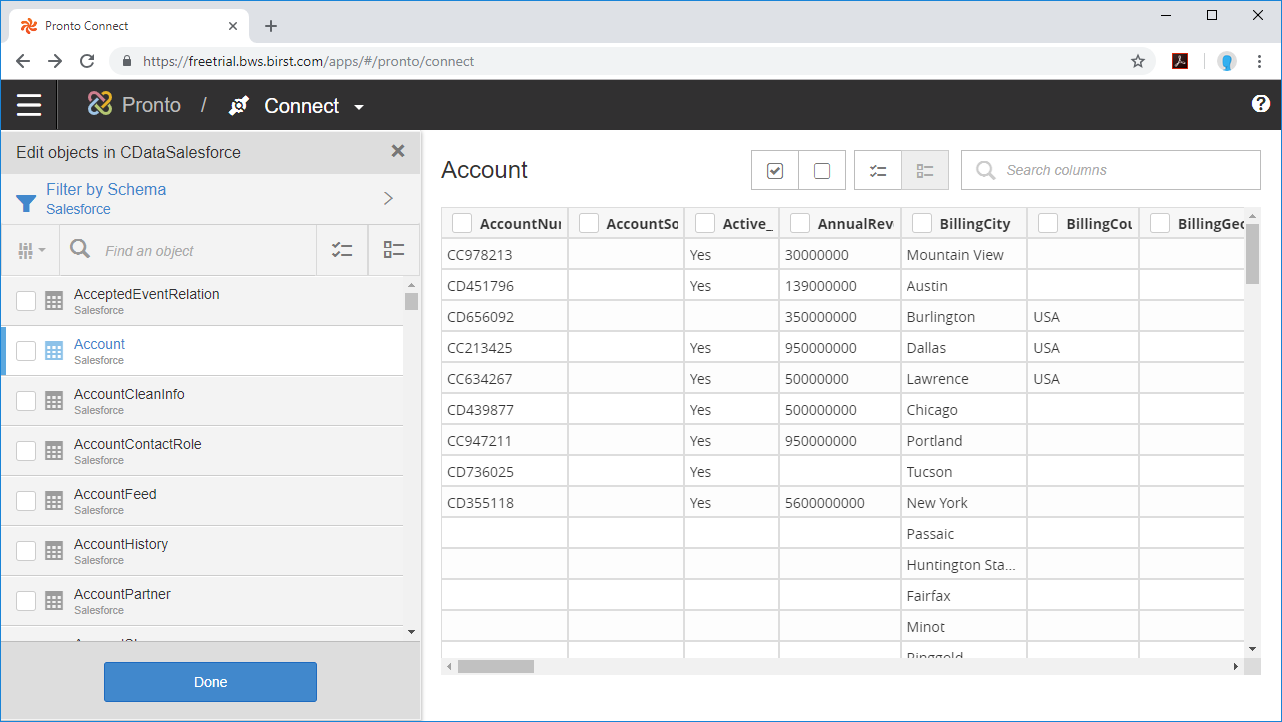
With the objects configured, you can perform any data preparation and discover any relationships in your data using the Pronto Prepare and Relate tools.
Build a Visualization
After you prepare your data and define relationships between the connected objects, you are ready to build your visualization.
- Select the Visualizer tool from the menu.
- Select Measures & Categories from your objects
- Select and configure the appropriate visualization for the Measure(s) you selected.
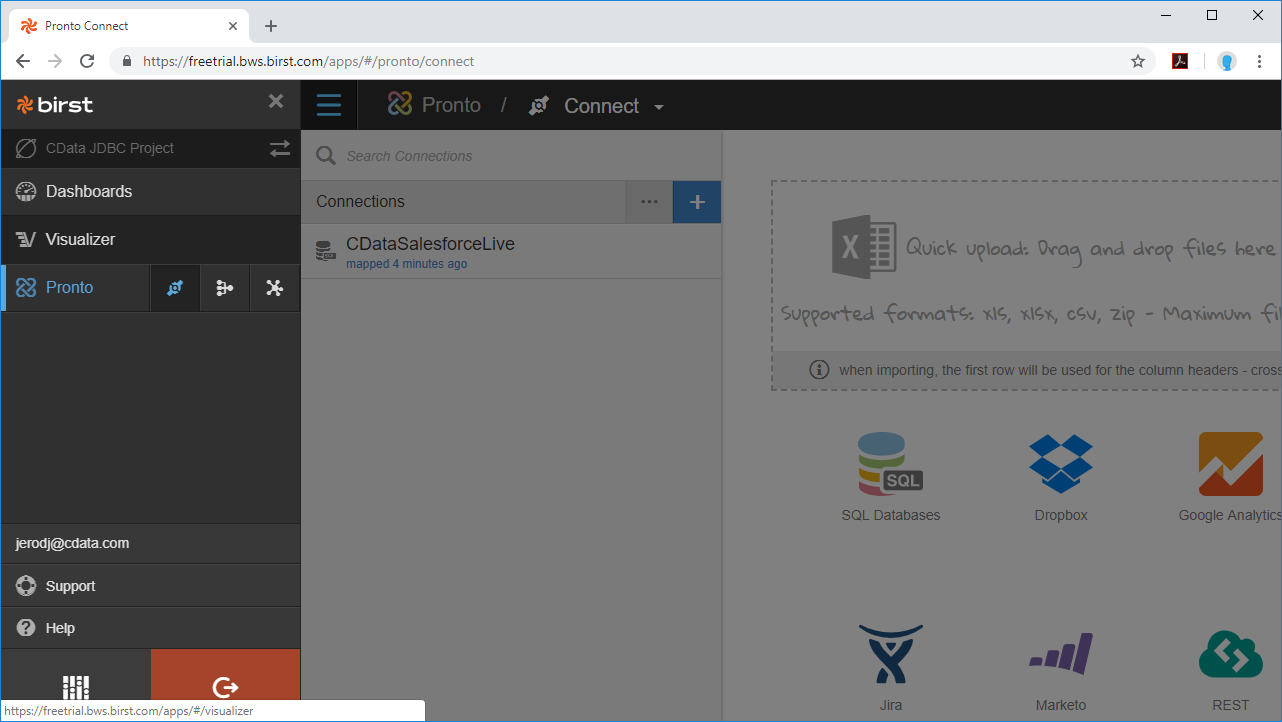
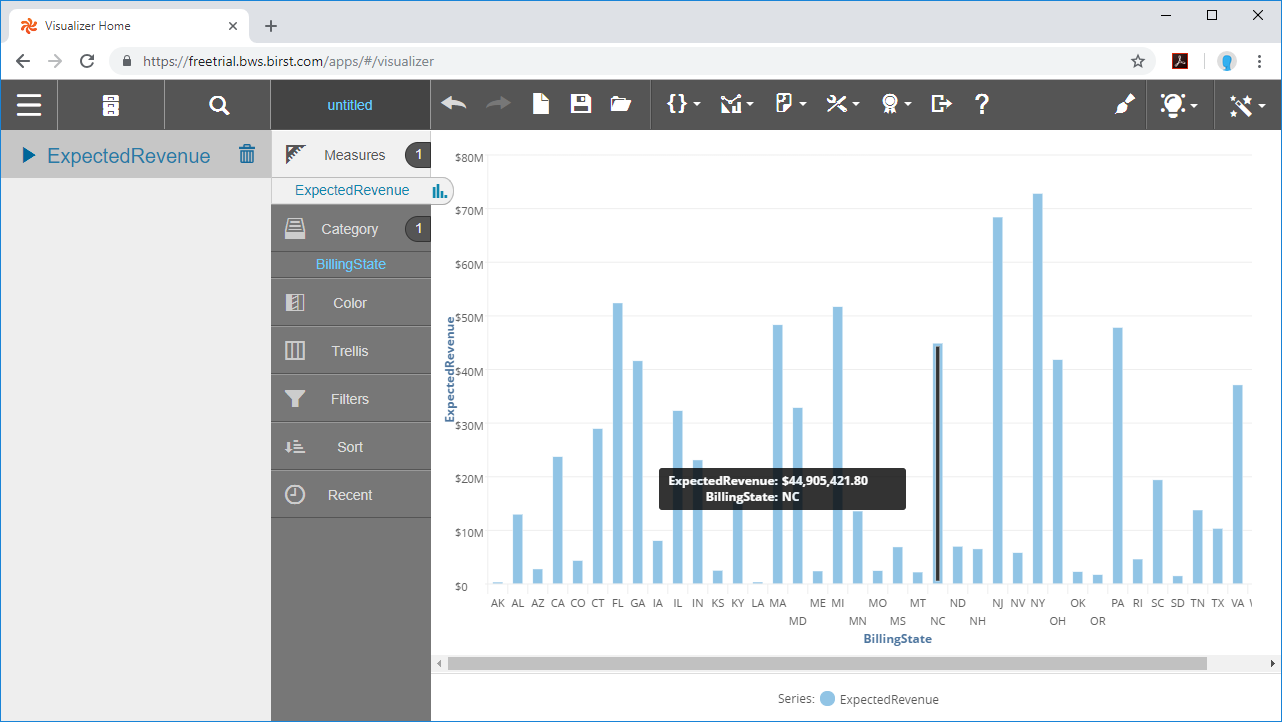
Using the CData JDBC Driver for Salesforce Marketing Cloud with the Cloud Agent and Birst, you can easily create robust visualizations and reports on Salesforce Marketing data. Download a free, 30-day trial and start building Birst visualizations today.






